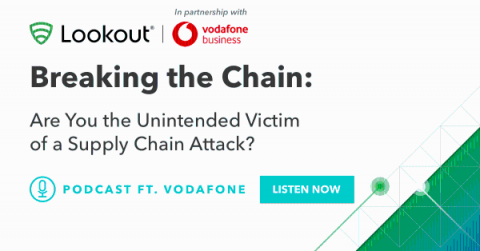Security | Threat Detection | Cyberattacks | DevSecOps | Compliance
February 2022
How Does a Secure Web Gateway (SWG) Work? | Lookout
Lookout Obtains FedRAMP JAB P-ATO for SASE: What It Means for You
While the pandemic brought on unprecedented challenges related to full-scale telework, it has also moved cybersecurity to the top of the U.S. government’s agenda. I have been very encouraged by the various actions taken by the Biden administration, beginning with the May 2021 executive order directing federal agencies to rapidly adopt a Zero Trust architecture.
Jim Dolce CEO, Lookout on the Gartner 2022 Magic Quadrant for SSE
Lookout Named a Visionary in First 2022 Gartner Magic Quadrant for Security Service Edge (SSE)
I am excited to share that Lookout has been named a Visionary in the 2022 Gartner Magic Quadrant for Security Service Edge (SSE). We believe our strong position in the “Completeness of Vision” axis demonstrates the alignment of the Lookout Platform with the market direction. This achievement would not have been possible without the hard work and passion of the entire Lookout family who have embraced the opportunity to support our customers on their digital transformation journey.
Mobile Device Hack
Apple Cyber Attacks: Mobile Devices Still at Risk
Apple iPhone users are one of the largest targets when it comes to cyber-attacks. Apple uncovered its biggest hack in history last November, which went undetected for five years. At the time they alerted users who had fallen victim to the colossal Apple cyber attack. The hack targeted Apple’s iCloud service and was able to gain access to users’ photos, videos, and other personal information.
Breaking the Chain: Are You the Unintended Victim of a Supply Chain Attack?
We’ve heard a lot about “supply chains” of various industries over the past couple of years, and the cybersecurity sector is no exception. When Colonial Pipeline was compromised by ransomware, it affected the physical supply of gasoline to consumers. On the software side, malware distributed through a SolarWinds update and vulnerabilities discovered in Apache’s Log4J created rippling effects for organizations around the world.
Cloud Transformation: Leveraging Existing IT Investments
Digital transformation has forever changed the way healthcare organizations deliver care. By pivoting to cloud based platforms, health systems can liberate data from silos and connect it in ways that enable them to gain insights, take action and collaborate across a patient’s care journey.
How federal agencies can revamp their mobile security posture
Your Cell Phone and Your Identity: Keeping Your PII Safe
Have you considered how often your phone number has been shared? Most of us give out our cell phone numbers all the time – to friends, acquaintances, colleagues, and even big, monolithic, impersonal companies. We may even print them on business cards or list them on public forums. A cell phone is no longer just a way to contact someone to engage in conversation.
Why you need to pay attention to mobile app security
Aside from executing physical attacks on servers, hardware or people, there are three main access points where criminals can break into systems: web, mobile and API. In this post, we’ll focus on mobile security, an area increasingly being exploited due to a sharp rise in mobile device use over the course of the pandemic.














